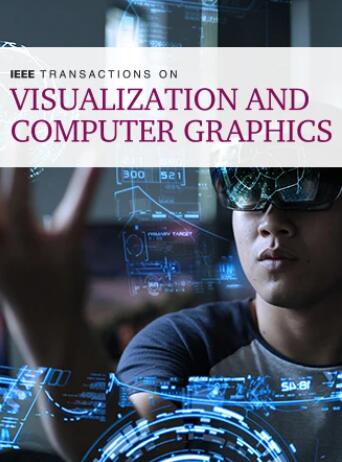在线VR场景中独立物理空间的多用户重定向行走
IF 6.5
1区 计算机科学
Q1 COMPUTER SCIENCE, SOFTWARE ENGINEERING
IEEE Transactions on Visualization and Computer Graphics
Pub Date : 2022-10-07
DOI:10.48550/arXiv.2210.05356
引用次数: 5
摘要
随着最近Metaverse的兴起,在线多人虚拟现实应用在全球变得越来越普遍。然而,由于多个用户位于不同的物理环境中,不同的重置频率和时间可能会导致在线协作/竞争VR应用的严重公平性问题。为了保证在线VR应用/游戏的公平性,理想的在线RDW策略必须使不同用户的移动机会均等,无论物理环境布局如何。现有的RDW方法缺乏协调不同pe中多个用户的方案,因此在运动公平性约束下存在触发所有用户过多重置的问题。我们提出了一种新的多用户RDW方法,该方法能够显着减少总体重置次数,并通过提供公平的探索为用户提供更好的沉浸式体验。我们的关键思想是首先找出可能导致所有用户重置的“瓶颈”用户,并根据用户的下一个目标估计重置时间,然后在最大瓶颈时间内将所有用户重定向到有利的姿势,以确保后续重置可以尽可能推迟。更具体地说,我们开发了方法来估计可能遇到障碍物的时间和特定姿势的可到达区域,从而能够预测任何用户引起的下一次重置。我们的实验和用户研究发现,我们的方法在在线VR应用中优于现有的RDW方法。本文章由计算机程序翻译,如有差异,请以英文原文为准。
Multi-User Redirected Walking in Separate Physical Spaces for Online VR Scenarios
With the recent rise of Metaverse, online multiplayer VR applications are becoming increasingly prevalent worldwide. However, as multiple users are located in different physical environments, different reset frequencies and timings can lead to serious fairness issues for online collaborative/competitive VR applications. For the fairness of online VR apps/games, an ideal online RDW strategy must make the locomotion opportunities of different users equal, regardless of different physical environment layouts. The existing RDW methods lack the scheme to coordinate multiple users in different PEs, and thus have the issue of triggering too many resets for all the users under the locomotion fairness constraint. We propose a novel multi-user RDW method that is able to significantly reduce the overall reset number and give users a better immersive experience by providing a fair exploration. Our key idea is to first find out the "bottleneck" user that may cause all users to be reset and estimate the time to reset given the users' next targets, and then redirect all the users to favorable poses during that maximized bottleneck time to ensure the subsequent resets can be postponed as much as possible. More particularly, we develop methods to estimate the time of possibly encountering obstacles and the reachable area for a specific pose to enable the prediction of the next reset caused by any user. Our experiments and user study found that our method outperforms existing RDW methods in online VR applications.
求助全文
通过发布文献求助,成功后即可免费获取论文全文。
去求助
来源期刊

IEEE Transactions on Visualization and Computer Graphics
工程技术-计算机:软件工程
CiteScore
10.40
自引率
19.20%
发文量
946
审稿时长
4.5 months
期刊介绍:
TVCG is a scholarly, archival journal published monthly. Its Editorial Board strives to publish papers that present important research results and state-of-the-art seminal papers in computer graphics, visualization, and virtual reality. Specific topics include, but are not limited to: rendering technologies; geometric modeling and processing; shape analysis; graphics hardware; animation and simulation; perception, interaction and user interfaces; haptics; computational photography; high-dynamic range imaging and display; user studies and evaluation; biomedical visualization; volume visualization and graphics; visual analytics for machine learning; topology-based visualization; visual programming and software visualization; visualization in data science; virtual reality, augmented reality and mixed reality; advanced display technology, (e.g., 3D, immersive and multi-modal displays); applications of computer graphics and visualization.
 求助内容:
求助内容: 应助结果提醒方式:
应助结果提醒方式:


